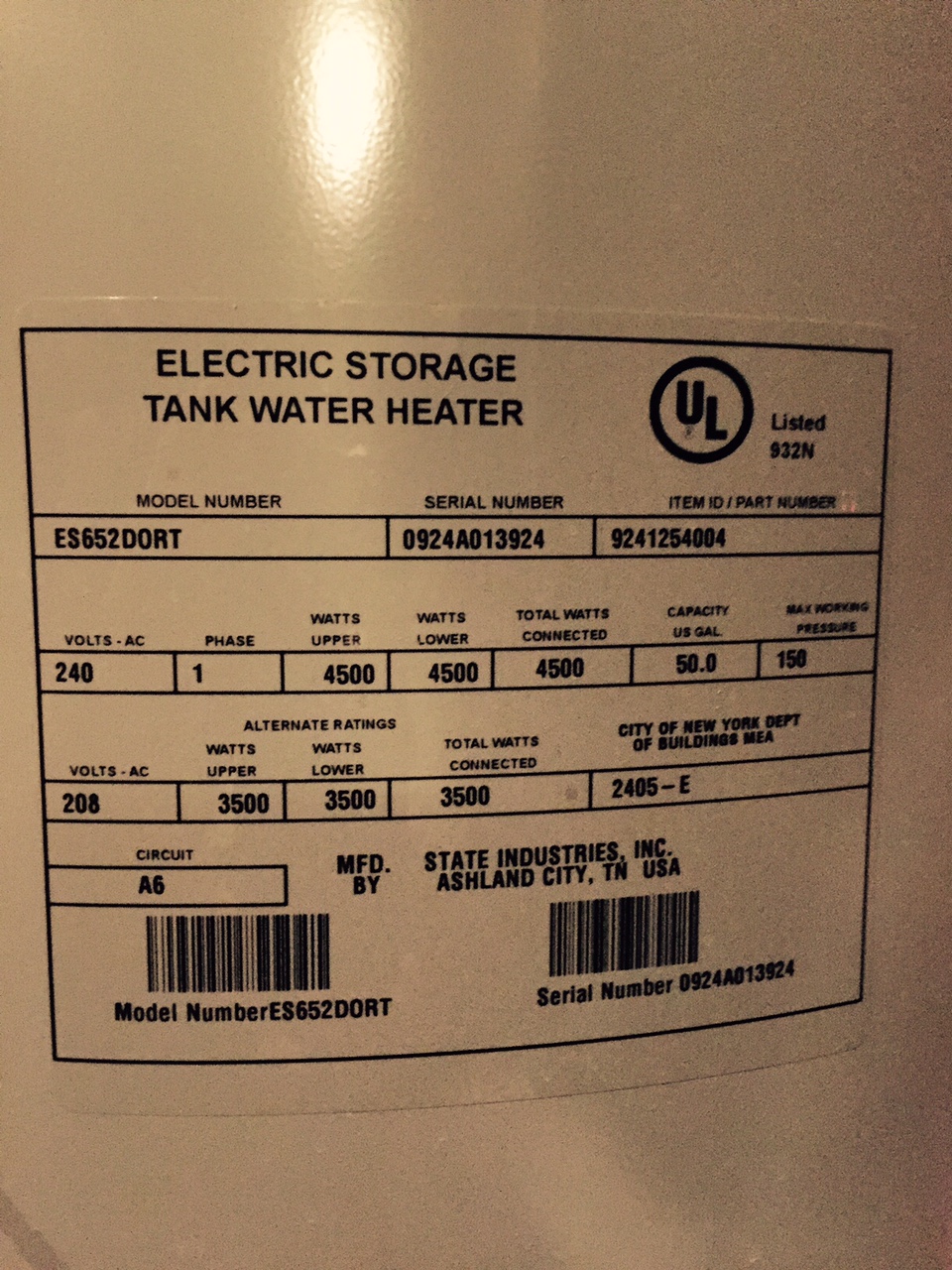

If the system is closed, the pressure will start to climb steadily and rapidly. Turn the thermostat back up to its normal position, so the heater cycles on. Make sure that outside fixtures, if they are on the same system, are turned off too.Ĭheck the water pressure gauge, and turn the pointer so it lines up with the pressure indicating needle. Shut off the drain valve and make sure that no other fixture in the system, hot or cold, is open. Open a hot water tap and allow 15% to 20% of the tank’s volume to run out. Open the drain valve, so the gauge reads system pressure.
#AVERAGE AGE OF WATER HEATERS INSTALL#
Turn the heater thermostat all the way down, and install a water pressure gauge with dead hand on the drain valve. The water in a water heating system expands when it is heated and has a greater volume.įollow these easy steps to diagnose thermal expansion: In any case, you should talk to your insurer to find out the age limits and deductibles in the part of your homeowners insurance related to hot water heaters.įor your peace of mind, whether you want to replace your hot water tank or you just have some questions regarding its condition, call on the professionals at Plomberie Roger Chayer Inc., and they’ll be more than happy to assist you.The most common reason a T&P valve is dripping water is thermal expansion. Therefore, to meet the requirements of insurers and to continue benefiting from their protection, you must replace your water heater once it exceeds the covered age (10 or 12 years), even if it still works perfectly well. Some companies may allow a water heater that’s up to 12 years old, but with an average deductible of $5,000 in the event of a claim.

This modification followed that of the manufacturers, which now only guarantee their tanks for a maximum of 15 years.įurthermore, insurers must consider the increasingly steep financial consequences of water damage caused by a ruptured or leaky tank, as water heaters have become more common in condominiums, which have also become more common.Īs a result, most insurance companies require their clients to replace their hot water tanks after 10 years otherwise, they won’t be covered under their homeowners insurance in the event of water damage. Several years ago, insurance companies lowered the insurable lifetime of water heaters from 20 years to 10 or 12 years. You find traces of rust on the bottom of the tank (indicating a crack)Ĭan your insurer refuse to pay your claim if your water heater is too old?.You notice traces of moisture on the tank.Your light-colored clothing comes out of the washing machine with stains or a brownish hue.The water exhibits a yellowish tinge (indicating the presence of rust).Here are some signs that you’ll soon need to replace it: Take care of your water heater to guarantee its longevity and insurability! Signs that your water heater is on its way outĪ water heater won’t last forever: it has a lifecycle of somewhere between 10 and 15 years (around 12 years on average). Consequently, you can quickly find yourself with several centimeters of water on the floor, which can quickly lead to disastrous and costly damage. You should also be aware that, in the event of a leak or rupture of your hot water tank, it will spill an average of 40 to 50 gallons of water, not counting the water coming from the supply valve. However, each insurance company applies its regulations according to its own risk estimates. That’s why insurance companies have become increasingly demanding with regard to certain items in your homeowners insurance coverage, notably your water heater. Insurance and the age of your water heater: should you replace it?ĭid you know that, in Quebec, water damage is the primary source of homeowners insurance claims? In fact, according to the Insurance Bureau of Canada, this type of damage represents 50 percent of the total amount of claims paid by homeowners insurance providers, and water heaters are often to blame.


 0 kommentar(er)
0 kommentar(er)
